
How to Research a Company: 5 Tools to Look Up Your Prospective Employer in Under 30 Minutes

Writing customised applications takes time, but if you’re not going to take the time, you may as well not bother at all. Learning how to research a company is an important part of landing your dream job.
How else will you stand out and impress your potential employer? This is why services like VisualCV are so popular – it’s a competitive world and you need to look great and show your potential to future employers.
But how do you know if the company is worth your while? Or, if you’ve received multiple offers (go you!), how do you know which offer to accept?
Given you’re time-strapped, and probably going to have to go through this exercise quite a few times (particularly if it’s prior to an application), you’ll need a speedy way to research your prospective employer – ideally in less than 30 minutes.
That’s not enough time to run through all the different types of market research out there, but it’s plenty enough time to get a great idea of which roles look like a good investment for your time.
In this post, I’ll show you how, using completely free online tools.
1) Glassdoor – for the culture and pay
If you’re not already familiar with Glassdoor, it’s kind of like RottenTomatoes for companies, allowing current (and former) employees to rate what it’s like to work there, and what the CEO and other leadership is like.
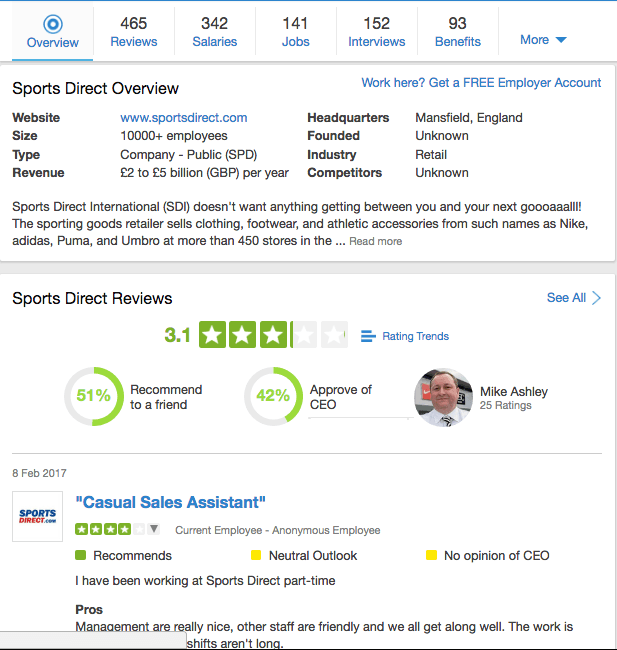
Like any review site, you’ll have to take individual reviews with a slight grain of salt, but read several (or just look at the overall score) and it should give you a reasonable sense for whether or not this is the kind of place you want to work.
For example, some people might rate as negative a place where you have a lot of autonomy (i.e. lack of direct guidance), while others would thrive in that environment and rate it highly. Some people like relaxed places, others want it to be competitive and driven. So make sure you take the time to read the context of the reviews too – what is a turn off (or on) for some may be the opposite for you.
It also helps you benchmark their average salary for different positions, which you can then compare to the industry average using their salary search (pretty handy!)
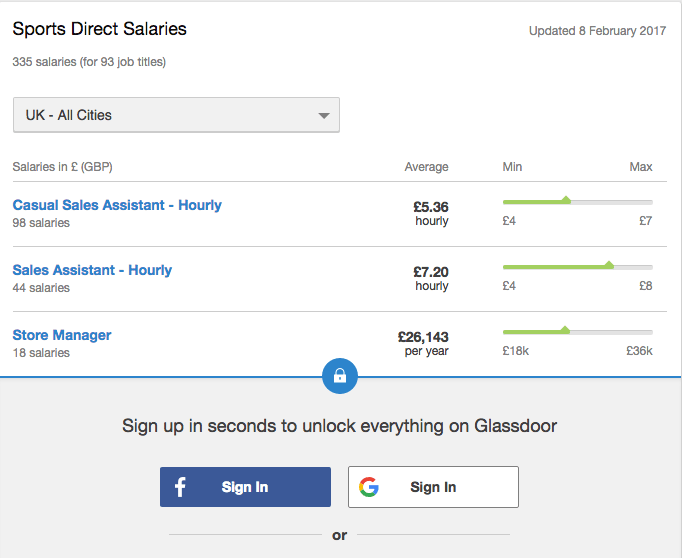
This is all for free, though it will require you to sign up.
2) DueDil – for financial health
DueDil is a great service for quickly checking on the financial stability of your potential employer, as well as the backgrounds of the company’s directors and major shareholders.
You’ll be able to see if they’ve been bankrupt, or had any other major financial issues; and see what other companies they’re involved with.
If they’ve been around long enough (more than a financial year), you should also be able to see their fillings, which will help you figure out if they’re generating much revenue (and profit), and if it’s over a longer period of time, whether their financial health is trending in the right direction.
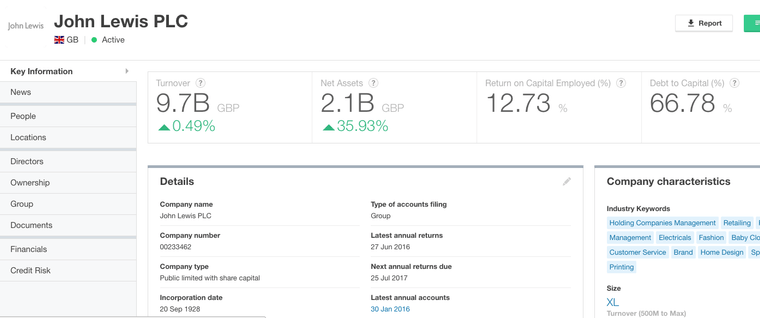
3) LinkedIn – for employee stickiness and talent depth
Of course no job-related post would be complete without referencing LinkedIn… but just how should you use it and what information should you be looking for on your potential employer?
I’d focus on 2 things.
Firstly, take a look at the company’s average tenure and staff turnover.
You can do this by searching for the company and then selecting ‘jobs’ and, in the right hand column, ticking the company’s name under ‘past companies’ so you see everyone that’s moved on.
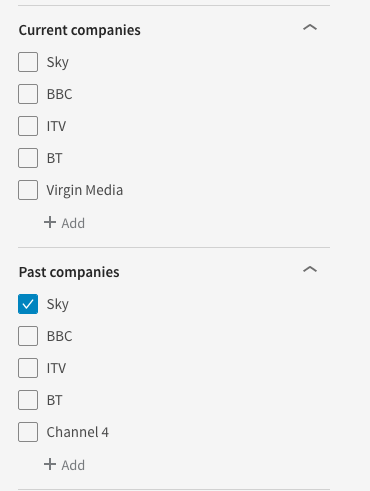
Now you can go through and click a few people to see how long they were there.
If there’s a lot of quick turnover (say most people are there for less than a year), that may give you pause for thought.
However you should also make sure you’re comparing like for like if the company is large enough, so for example sales roles often have higher turnover, so if you’re looking for a marketing role, don’t be too put off by that. However if it’s churning through marketers like no tomorrow, that could be a bad sign.
As a quick side note, if you tick ‘current company’ now, this is also a good way to see if they’re any good at promoting from within, as you should also start to see if many people list positions previous to their current one, but at the same company.
Finally, you should also be taking a look at where people worked previously, and where they’re going on to work. This will tell you a lot about the talent that you’ll be working with, and also how well regarded it is by other employers in the space.
Given most people don’t stay in jobs for life these days, that’s a pretty important factor – kind of like assessing colleges for their rankings with employers.
4) Twitter – for market sentiment
If people are unhappy (or even happy), you can bet your bottom dollar they’ll be telling the world about it on Twitter. It’s why journalists love it, and so many brands use it to monitor what people are saying about them.
So why not do the same, and see what the general sentiment is for your future employer?
Nobody wants to work for someone that everyone hates (at least I wouldn’t)…who’d want to have to lie about their employer at a dinner party?!
On a more serious note, it may also be a red flag in terms of their future prospects. Companies with a poor Net Promoter Score (NPS), often lose customers and struggle to attract new ones as the word spreads, so you don’t want to join a sinking ship.
While Twitter can’t give you a company’s NPS, it can give you an idea about whether there’s a lot of good/bad sentiment around it.
Just head over to twitter.com/search-advanced and plug in the Twitter handle of the company and choose to look at tweets that mention them with negative or positive sentiment and you can quickly form a judgement on how often people are praising (or complaining) about their products or service.
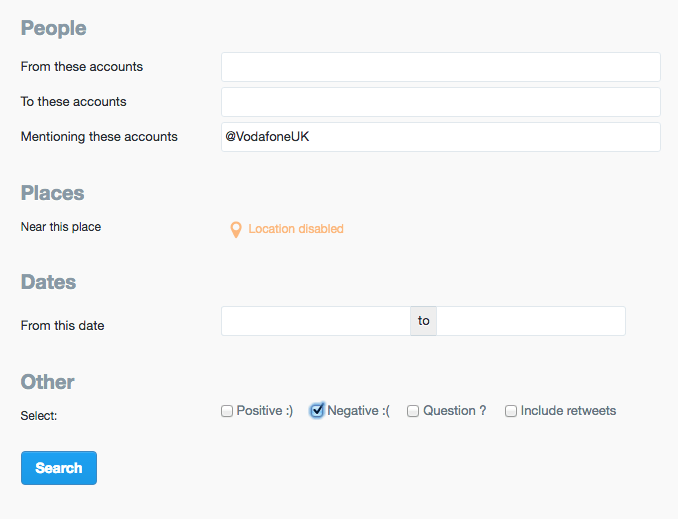
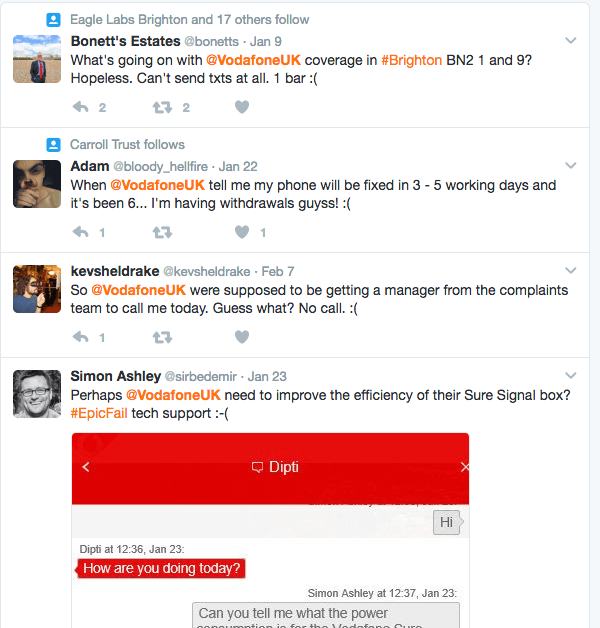
If you find Twitter isn’t giving you much, you could also try a tool called SocialMention, a free tool for “Real-time social media search and analysis,” which covers a broader range of services, and gives the ratio of positive to negative sentiment.
4) KWFinder – for their competitiveness
Finally, is the company you're considering joining a market leader, or at the back of the pack?
There are lots of ways to research this, and only looking at one factor might not be fair, but then you’ve only got 5 minutes, and the point is to give you a quick overview.
So we’ll focus on how authoritative their site is, for their chosen keywords.
Firstly, you need to figure out what their keywords are. To do this, head to their homepage, and in Chrome (this will differ in other browsers), hover over view and pick ‘Developer Tools’ from the ‘Developer’ menu at the bottom.
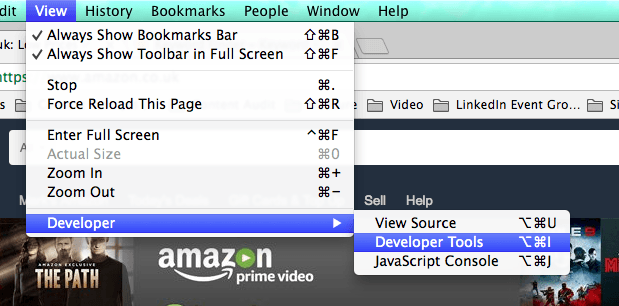
Now you’ll see a somewhat intimidating looking screen that looks like this:

Don’t worry, you don’t really need to understand it. Just hit search on your keyboard (Command + F on a Mac) and type it “keyword.”

Select one or two of the keywords (or phrases) listed, and now head over to KWFinder.
This is a tool that tells you which sites are ranking for a particular keyword, along with other key details, such as their Domain Authority and number of inbound links.
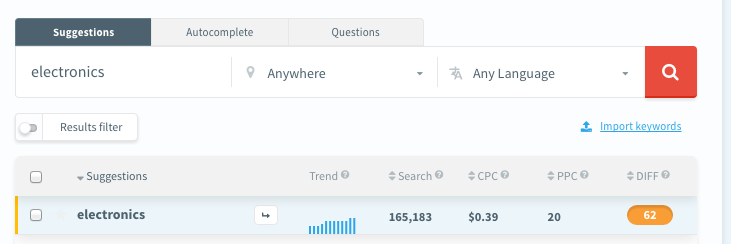

Ideally you’d be looking for your prospective company to rank reasonably well for the terms they’re trying to rank for (unless this is why they’re hiring you…to improve them!)
Domain Authority is also a good indication for how well it will do generally in Google searches, based on it’s history and the number of links it has from other well-respected sites.
Of course new startups can’t be expected to have a great DA…and this is only one dimension to a company’s competitiveness in a market, so you shouldn’t write them off if they look weak in this area but strong everywhere else. However it’s nonetheless useful information to know.
In conclusion
Researching every company you apply to should become as routine as updating your resume. As you get used to these tools, you should be able to go through each in around 5 minutes, which actually leaves you with 5 minutes to spare for making a cup of tea and feeling smug that you’re now better informed about your prospective employer than 99% of the competition.

Written By
Mark Walker
Experienced B2B marketing leader and award-winning content marketer
Mark Walker is an experienced B2B marketing leader and award-winning content marketer.
He’s a prolific blogger and speaker on all things digital, marketing and content; and he loves to learn and connect with others interested in the trends shaping our future.
Mark runs swotnot, a blog that looks at the intersection of technology, marketing and business, and you can also connect on Twitter or LinkedIn.

Following up after your job interview with a thank-you letter is a great way to show that you are enthusiastic about the job.
April 2, 2019
Read Post

Co-Founder & Director

With these 8 simple tips you will have all the steps you need to get a great job.
October 7, 2015
Read Post

Co-Founder & Director

We live in a world where working as a freelancer is easier than ever. An Internet connection alone makes it possible for an artist to land a gig designing a logo for a company on the other side of the planet or a writer producing marketing copy from a coffee shop.
November 11, 2015
Read Post

Co-Founder & Director
Copyright ©2025 Workstory Inc.